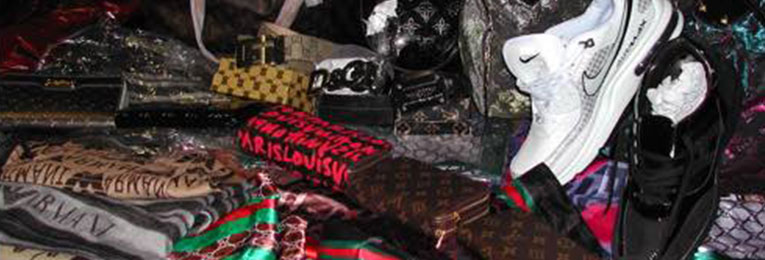Counterfeit goods are now estimated to account for as much as 3.3% of world trade. A considerable rise since 2013, the year when the report was last issued and counterfeit goods were estimated at 2.5% of all global trade, for a value of 461 billion dollars.
In the EU, 6.8% of imports from the rest of the world consist of fakes, corresponding to a value of 121 billion euros per year (in 2013, they were estimated at 5%, for a value of 85 billion euros). It’s important to note however that this number refers only to the goods actually seized in customs and does not include counterfeit goods produced in the EU, as is also true of pirated digital contents on the internet.
Counterfeiting and pirated goods follow a series of complex pathways, which often pass through Free Trade Zones. Counterfeit goods are increasingly shipped in small quantities, by regular mail, or by express couriers: typical shipment methods for online businesses, which offers criminals two big advantages. First, such shipments are difficult to intercept, and second, the risk of fines is minimized.
Among the countries with the highest rate of piracy are China and Hong Kong, which remain in first place, as was also true in the previous report. It must be said, however, that in the case of China, the rate of piracy has fallen, while that of Hong Kong has risen. Next in the classification are Turkey and the United Arab Emirates. Among the destinations, instead, are the USA, France, Switzerland, Italy, Germany, Japan, South Korea and UK, as the countries hit the hardest by the phenomenon of false goods.
The study also takes a look at the scenario in Italy, presenting the estimated costs of the false market in 2016, which was responsible for the loss of 88 thousand jobs, a loss of inland revenue equal to 10.3 billion euros, the equivalent of 3.2% in value added tax, or 0.62% of the national GDP.
What goods are at risk of being counterfeited? All those that are protected by a brand, patent, right of design or copyright. Each one of these four kinds of intellectual property rights are subject to the risk of counterfeiting. The products counterfeited the most are footwear (based on customs seizures), followed by apparel and machines, and luxury goods. 24% of the total value of all seized false goods that violated intellectual property rights were recorded in the USA, France, and Italy.
Who buys counterfeit goods? In 58.5% of the cases, it’s someone who is aware that they are buying a false product: they do it not only because it is difficult to access the original, but also because there is a rush in doing something illegal. Instead, 41.5% of consumers are unaware of their false purchases and are victims of fraud.



